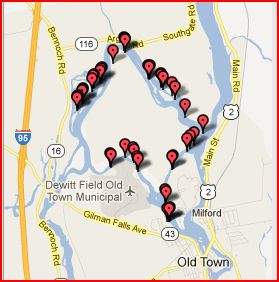The ability to survive rough treatment and a wet environment is why we've trusted Olympus waterproof Stylus Tough with our kayaking memories for many years. Olympus Stylus Toughs tuck into a PFD pocket, survive rolling practice and take a decent picture.
Mark started with a Stylus Tough 8000 in 2009. In October of 2010, tired of seeing his camera always packed into my PFD, Mark purchased the Stylus Tough 8010, and kindly, let me pick which camera to use.
I've kept the 8000. Mark has had the 8010, which takes better photos, but has a slow start time. So when a recent trip to Best Buy displayed the Olympus TG-1 as the "first tough camera with a high speed lens" Mark was definitely interested. He played with the camera in the store, filling the memory card in just a few minutes. Before he bought, Mark came home to check out reviews on line. The reviews were generally positive, so the next night we were back at Besy Buy to purchase the camera, and an additional memory card.
Mark loves the rapid speed of the camera. He's begun taking shoots in bursts so he can later select the best of the batch. With the Orson Island trip he took over 200 shots - which he later whittled down to about 50 keepers.
Best features of the TG-1:
Rapid fire quality shots. Wildlife doesn't stand still for us, so we need a fast acting camera to increase our odds of capturing a decent shot.
Fast start up time - up and shooting within 2 seconds.
Better low-light performance - so less blurring on those evening shots.
Colors seem to appear more dynamic - which means less messing around with image editing software.
Better low-light performance - so less blurring on those evening shots.
Colors seem to appear more dynamic - which means less messing around with image editing software.
Still fits in a PFD pocket.
Option for alternative lenses; a fish eye lens and a telephoto lens of almost twice the zoom. There's also a lens convertor adapter which allows any 45mm filter to be used with these lenses.
GPS records of where photos were taken.
Entertaining features:
Enough modes to entertain a fast kayaker while the slower kayaker catches up. (I'll let you guess which is which.)
Locations of nearby attractions seem to be programmed in (for use with the GPS feature). This allows for speculation: Why is the Bangor Hose 5 Fire Museum considered an attraction and not the Orono Board Walk? Is there a way to customize these notices? Maybe to list boat launches?
Challenges:
Lens is exposed all the time. Though the lens is treated to resist spotting, shoving a lens in and out of a pocket makes it likely to get finger prints, water drops, etc. We'll need to figure out a way to carry a lens cloth with us to clean the lens periodically.
Initial Memory with the camera is insufficient, an additional memory card must be priced into the purchase. However, memory is cheap - we got a sizable card for less than $20.
The Olympic TG-1 takes 12 megapixel shots. The lens is not such that it will allow us to capture every feather of an eagle perched in the top of a tree, but enough to tell a decent story.
I've thrown in a variety of shots from the Orson Island Trip to demonstrate the camera. However, just like I do for all posts, image quality is cut down and pictures are trimmed to allow the photos to load faster.















































